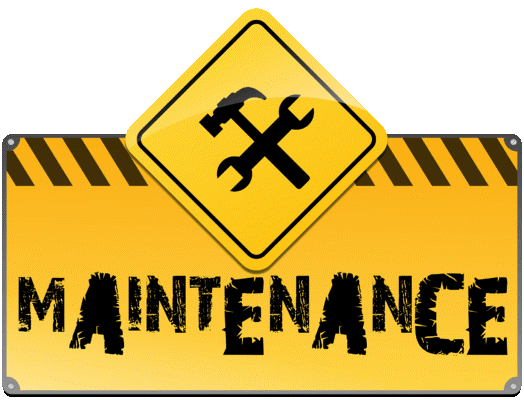It’s Friday afternoon, you’re finishing a batch for which you have asked your operators to stay on an extra hour to complete the order. Suddenly the machine stops and an alarm goes off.
You quickly call technical assistance, the technician takes a look at it remotely and after 20 minutes decides that it requires on-site technical support – which will be carried out on Monday at the earliest.
Due to this unforeseen event, you are not able to complete the job as planned and you will need to call the customer – who had been promised a specific delivery date – saying that if everything goes well, the delivery will not take place that day, but the following Tuesday (hoping that the downtime can be solved in half a day).
This is a brief account that in a few lines provides a view of what happens in many production departments.
If you are an entrepreneur or a production manager operating in the sector of metalworking machine tools, you are probably familiar with this and it’s something you have already experienced yourself.
I don’t need to tell you about that feeling when you have to pick up the phone and call the customer to tell them about the above… I gather it’s not a pleasant feeling and it doesn’t leave you in a good mood.
However, to solve such an important issue, you clearly cannot just think that the problem can be ‘treated’ by licking your wounds.
You need to adopt preventive measures in order to anticipate any unpleasant events and have the time to implement efficient countermoves.
This means that it is essential to start from the right question and ask yourself:
“Why are we in this unpleasant situation? Why did this unforeseen event occur? What can we do in terms of production strategy to improve this aspect and avoid constantly losing money?”
The answer? Here it is…
Situations like the above happen when you underestimate the importance of MAINTENANCE on plants and you only take immediate action and try to ‘patch things up’ whenever there is a problem or a failure occurs.
In the light of my experience in this sector, unfortunately I am aware of many companies that do not carry out any kind of maintenance on their machines.
And the real issue is that they usually justify themselves by saying:
“… but we don’t have time to stop for maintenance, we need to produce. When something breaks, we repair it there and then”.
Words and a justification both equally terrible and extremely dangerous for the future of your company and production department, from which you need to distance yourself as soon as possible.
The truth is that constantly putting something off has far worse consequences on performance and results compared to the decision of stopping to have your car serviced and then continue without affecting the engine.
This is the damaging excuse you tell yourself to avoid taking action.
WHAT NO-ONE TELLS YOU ABOUT PREVENTIVE MAINTENANCE
To avoid keeping on hiding yourself behind pointless excuses to then have to face obstacles that are almost impossible to overcome, you need to take immediate action.
To do so, the best solution is to learn techniques you can put into practice in your department straight away and that will help you maintain the attention high in order to have a system that enables you to anticipate and prevent any unforeseen event.
And the right technique to start from is undoubtedly TPM.
Total Productive Maintenance is a maintenance approach aimed at achieving maximum business efficiency.
It is one of the Japanese production techniques devised between 1960 and 1980 at the Toyota Motor Corporation and then developed in all of Japan’s top companies. The acknowledged ‘father’ of TPM is Seiichi Nakajima, technical director at Toyota.
Historically, TPM was created to ensure maximum efficiency of individual systems, focusing on the activities of operators, maintenance personnel and technicians involved in the process.
Subsequently, activities relating to quality, personnel development, safety and the environment, as well as industrialisation were also implemented.
TPM IS NOT A METHOD ONLY RELATED TO PLANT MAINTENANCE.
Where does the expression “Total Productive Maintenance” come from or rather what does it mean exactly?
Maintenance refers to an activity designed to maintain the efficiency of machines over time.
Productive, i.e. functional to production as it aims to improve the productivity of machines.
And Total means that it implies the active involvement of all personnel, not just the mechanical maintenance operator.
As always, everything revolves around people with their skills and intellect, so one needs to understand right away that without their active participation there is no improvement.
TPM aims to achieve maximum plant efficiency by focusing on the reliability of processes and the elimination of their downtime.
OEE (Overall Equipment Effectiveness) is the main indicator to measure results and detect areas for improvement. Plus, it is used to monitor the general efficiency of every machine.
By considering the Measurement and Data principle applied to the production department as a linchpin, to understand whether or not we are improving we need to have a reference unit of measurement.
Not opinions or feelings, but actual numbers.
This is why TPM must be measured with OEE.
TPM is an essential tool, especially in Capital Intensive companies, where the cost of production plants is considerable.
It is possible to make plants efficient by structuring a maintenance system based on what I define as the 3+1 cornerstones of TPM. There are also others, but as always I want you to apply the most incisive ones, which I have seen work in all their potential. Namely:
- Autonomous Maintenance: how machine operation is managed by operators on a daily basis.
- Preventive Maintenance: correct, periodic and prompt checks on machines (servicing, oil and filter change at set intervals).
- Continuous improvement: the study and achievement of Continuous Improvement for production processes, based on the Kaizen approach of continuous self-development.
The magic ingredient, the +1, is Training, i.e. continuous professional growth and increase in the skills of the people involved.
MAINTENANCE IS REQUIRED TO GENERATE PROFIT … IT’S A KEY PART OF PRODUCTION!
It should not be regarded as the ‘fifth wheel’, undersized and ready to operate only when there are breakdowns in the company.
On the one hand, there are simple activities like cleaning, inspection, lubrication and checking tightening: basic aspects to teach and manage independently for an operator working on the machine.
On the other hand, you have data analysis and the study of the lifecycle of the components of a machine, to be carried out by maintenance personnel.
The underlying idea is to involve, at different levels, several diverse figures to ensure everyone feels part of a process and of a result.
PREVENTIVE MAINTENANCE IS THE SET OF ACTIONS CARRIED OUT IN ADVANCE TO PREVENT THE FAILURE FROM HAPPENING.
Below is a tangible example to break down the concept into super simple ideas and make it as clear as possible.
For a moment, imagine your car’s timing belt and the idea of having to replace it. There are 2 approaches to the question.
In one case you might say: “The timing belt is still intact… I am waiting for it to break”, but then I blow the engine and I have to throw everything away (this is breakdown maintenance).
In the other case, instead, it’s very different to say: “The timing belt is intact but, as it has completed a certain number of kilometres, it’s time to replace it”, because the likelihood of damage increases after a certain period of time, so I replace it in advance (this is preventive maintenance).
I am yet to see a component that does not wear out when it comes to systems in motion. The starting point is very simple: every component is subject to wear.
If I am aware of this, then I can plan for proper Preventive Maintenance. However, first of all, as always there is the need to realise and be aware of the situation.
Therefore, in the manual of a machine tool, the manufacturer must identify the various units and sub-units of components, indicating for each one of them “belt change”, “oil change”, “filter change” intervals and so on.
Over time, companies have developed a strong interest for TPM because it is essential to have machines that are easy to maintain in order to obtain increasingly higher machine availability levels.
Lean production is good, but having machines that cause problems is the worst thing that can happen and, with stock reduced to zero (or next to zero), the inefficiencies that were hidden behind the supplies come to the surface.
Implementing TPM not only enables you to prevent failures, but also reduce defects, stops, machine downtime, reworkings and adjustments.
The aim is to do whatever can be done, to give your best to achieve increased machine efficiency.
In a nutshell, the features and main actions of TPM can be described as follows:
- Promote improvement activities to increase the efficiency of plants.
- Generate an autonomous maintenance system, by making the most of your resources.
- Design a preventive maintenance system.
- Instruct and train operators who need to know the machine in front of them.
- Eliminate the 6 big losses caused by breakdowns, setup and tooling, slowdowns, micro-stops, performance losses at start-up and losses due to non-conformity.
These are all points that certainly cannot be overlooked and are all essential if you really want to have a high-performance production department that will be able to thrive in the years to come.
Do you work in the sector of CNC Machine Tools for metalworking and are you curious to understand what would change in your production department by applying a specific Preventive Maintenance system?
Get in touch now to request your FREE consultation with one of our TECHNICAL TUTORS.
Send an email to porta@flexible-production.com for further information.
To learn more about Competitive Production
and Flexible Production
CLICK HERE
>>> www.flexibleproductionbook.com <<<
My book dedicated to users of Machine Tools for metalworking who want to make the leap in quality, is waiting for you!!!
To your results,
Maurizio Porta
Master Trainer PORTA PRODUCTION METHOD

 Ita
Ita Deu
Deu

